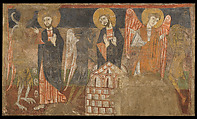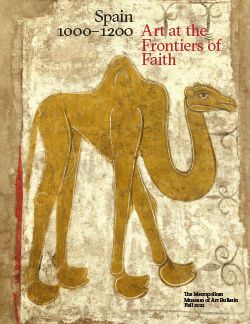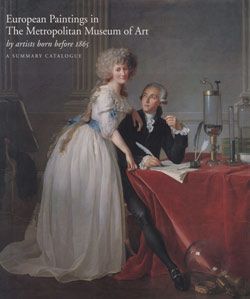The Temptation of Christ by the Devil
Esta sección del fresco de San Baudelio representa las tres tentaciones de Jesús por el diablo. Como se describe en el Evangelio de san Mateo, cuando Jesús finalizó su ayuno de cuarenta días en el desierto, el diablo le ordenó que convirtiera unas piedras en pan; a continuación, le pidió que saltara desde el Templo de Jerusalén y, por último, le ofreció todos los reinos del mundo. Solo las dos primeras tentaciones se ilustran aquí a la izquierda y en el centro, mientras que en el lado derecho un ángel le hace un gesto al diablo, una referencia al resultado de la tercera tentación, en la que los ángeles asisten a Jesús. La distribución secuencial de las escenas, que exige la repetición de las figuras principales a la manera de una tira cómica, indica el paso del tiempo. El diablo se representa de un modo distinto en cada escena: con alas en dos de ellas y con pies similares a pezuñas en la otra.
This section of the San Baudelio fresco depicts Jesus’s three temptations by the devil. As described in the Gospel of Matthew, after Jesus fasted forty days in the desert, the devil first commanded him to turn stones into bread, then demanded he leap from the Temple in Jerusalem, and finally offered him all the kingdoms of the world. Only the first two temptations are shown here, at left and center, while at right an angel gestures at the devil, alluding to the outcome of the third temptation, in which Jesus is ministered by angels. The side-by-side placement of the scenes, calling for the repeated depiction of the main figures in the manner of a comic strip, indicates the passage of time. The devil is depicted differently in each scene: twice with wings and once with hooflike feet.
Due to rights restrictions, this image cannot be enlarged, viewed at full screen, or downloaded.



